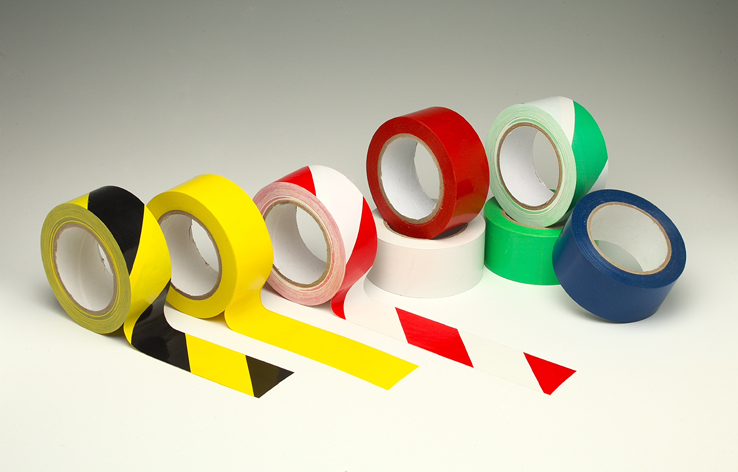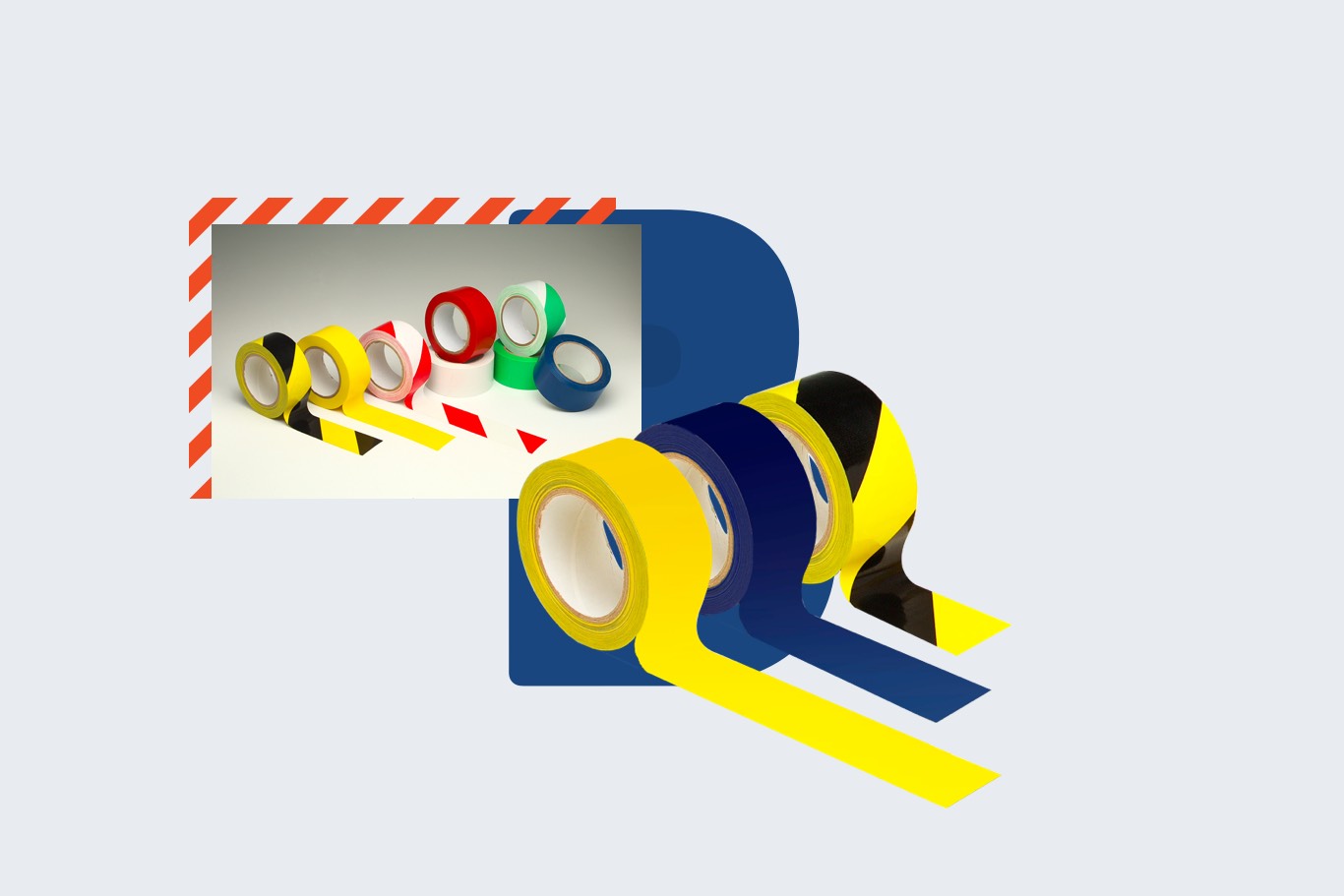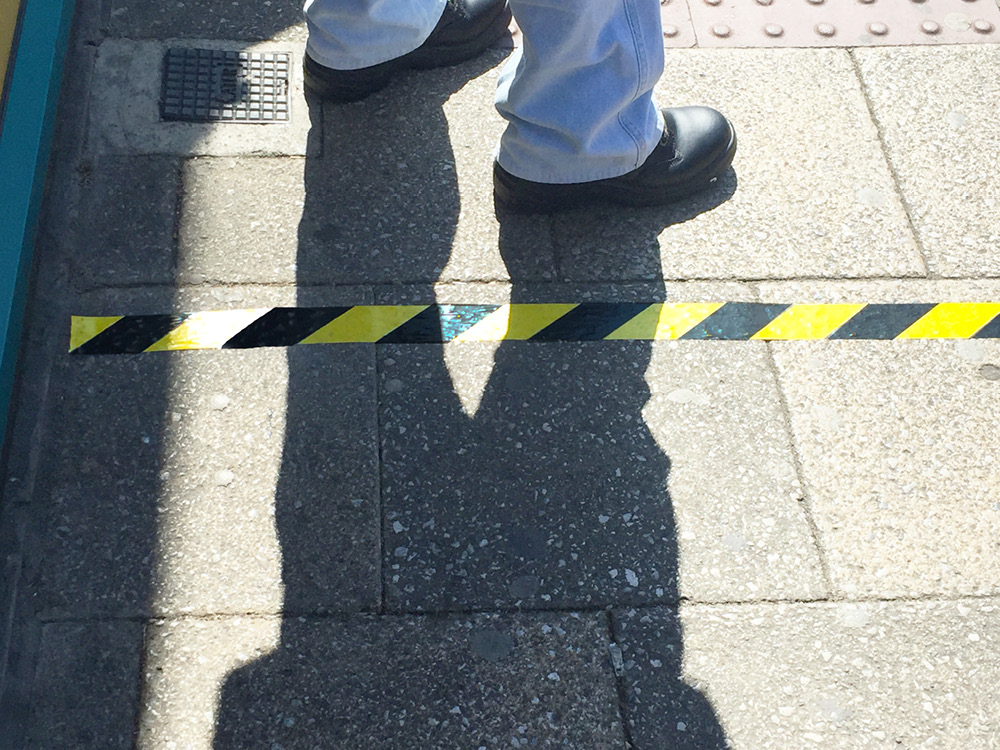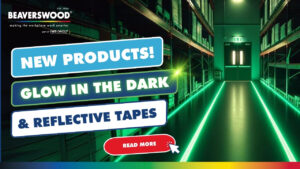Clear signage in workplaces must start at ground level, but this can be a ‘sticky’ subject if you don’t use floor marking tape logically. Here are our quick tips for the best floor marking tape solutions for your workplace.
Meeting Health & Safety obligations on signage is your first priority, but it’s also important to create visual prompts and guides to keep your productivity up. Then there are also maintenance indicators used to flag up out of commission machinery or temporary no-go-zones for example.
Many of these needs can be met by stocking up on a range of floor marking tape solutions in different colours and designs. Including plenty of high-vis yellow and black zig-zag adhesive tape, and ingenious anti-slip floor marking materials.
This guide to using floor marking tapes and kits will ‘lay down’ some good practice ideas to keep you compliant and efficient.
Benefits of using floor markings
We’ve touched on some of the reasons to use floor marking tapes in workplaces, but let’s start by looking at more ways to use this low-cost product to communicate from ground level.
Clearly, floor marking tapes provide the ideal way to indicate a hazard. Especially when used in conjunction with stickers that display universally understood safety symbols.
Creative use of floor marking materials avoids confusion and mistakes, and boost productivity when you plot out logical routes for staff and off-road vehicles.
International laws on workplace safety make a point of mandating proper signage as a central pillar of risk management. Especially places where pedestrians and off/in road vehicles operate.
For example, the UK HSE (Health and Safety Executive) says: “All traffic routes shall be suitably indicated where necessary for reasons of health or safety.”
Having suitably coloured tape to guide people to exits is highly recommended, to make fire safety signage more effective.
Floor tape can be used to show the location of specific equipment, such as First Aid points, cleaning stations and COVID-19 infection control materials.
One of the advantages of safety tape on workplace floors is that it’s signage that doesn’t form an obstruction. Floor markings are hard to miss too, as it’s a natural human instinct to look where we are walking or driving!
Best colour coding techniques for floor signs

Floor marking tapes are universally understood workplace signage, recognised in any language.
This makes it important to buy quantities of different coloured floor tapes, to create a versatile and easy to amend system for keeping everyone ‘on track’.
Though there is no standardised colour coding system for all workplace safety and productivity needs, the following are often the norm.
Red – danger (usually white/red zigzag) or an area of a factory designated for scrap materials
Yellow – traffic safety messaging, risk areas and individual work zones (often as a yellow/black zigzag)
White – storage areas and equipment zones
Orange – goods awaiting inspection or transit
Green – finished goods or recycling areas for certain materials
Blue – materials awaiting use or glass recycling areas
Black – production zones.
You will often see white/green zigzag floor markings commonly used for information purposes, such as where to find safety equipment or the best routes to walk.
Planning and using logical floor markings
The best way to use floor marking tapes is to create a bespoke floor plan, based on your risk assessment and current operational patterns. The best strategic floor marking system is consistent across all your entire site or sites.
Avoid having ‘busy’ floor markings and too many colours in one place, as this can diffuse how effective floor signs are.
It’s important to communicate what floor markings mean in your workplace, so everyone can use them at a glance. This should be documented and reinforced regularly but especially within induction periods.
Preferably with a digital and physical map showing workplace organisational and safety information, that corresponds to your floor tapping system.
Floor markings created to last
The next thing you need to know is how to apply floor marking tape properly and in a way that avoids constantly refreshing ground-level signage.
Make sure you choose durable, hardwearing floor tape, that doesn’t fray or crease too quickly. Fortunately, Beaverswood has this ‘tapped off” and is a supplier of quality floor marking tapes at low prices.
Next, it’s recommended that you clean floors thoroughly, let them dry, and then use chalk to create an initial pattern for ground-level signage.
For large areas, a floor marking kit that comes with a tape applicator is ideal. Floor marking tape tools can ensure you get a professional finish and straight lines.
Lastly, keep stocks of floor marking tapes from Beaverswood handy, for repairs or adaptations, or for semi-temporary floor signage systems.





